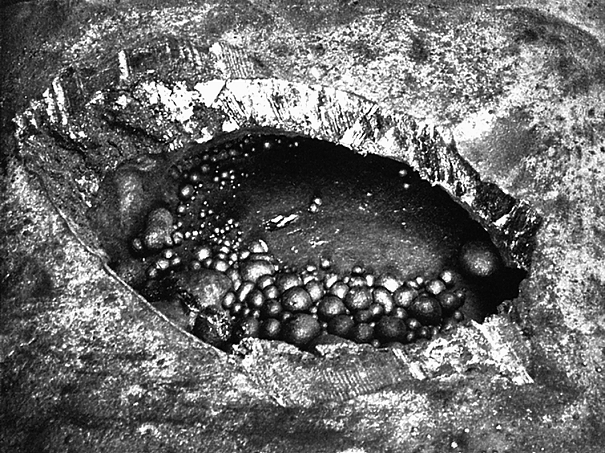Spraying pearl
Pearl-shaped inclusions which are only loosely attached to the surrounding metal.
The defect can be seen with the naked eye on the casting surface. In many cases, however, the spraying pearls are not revealed until after treatment. The defect can occur in all casting alloys, independant of the molding process.
In contrast to sweat, the spraying pearls have the same chemical composition as the casting. The basic structure is also the same. In cast iron, however, the graphite formation (see Graphite form) can deviate from the casting as a consequence of an increased cooling rate. Spraying pearls are generally covered by a thin oxide film, in some cases gas bubbles are present in the surrounding area. Strong turbulences during the casting process or spraying effects in the mold lead to the occurrence of prematurely solidified metal parts in the form of drops or balls which are covered by an oxide film and taken along by the casting metal. The oxide film prevents the pearls from being melted again by the subsequent melt flow.
An optimum gating system which ensures even and smooth mold filling can prevent this problem.
Additional references:
Casting defect
Mold sand-based casting defect
Cold shots


